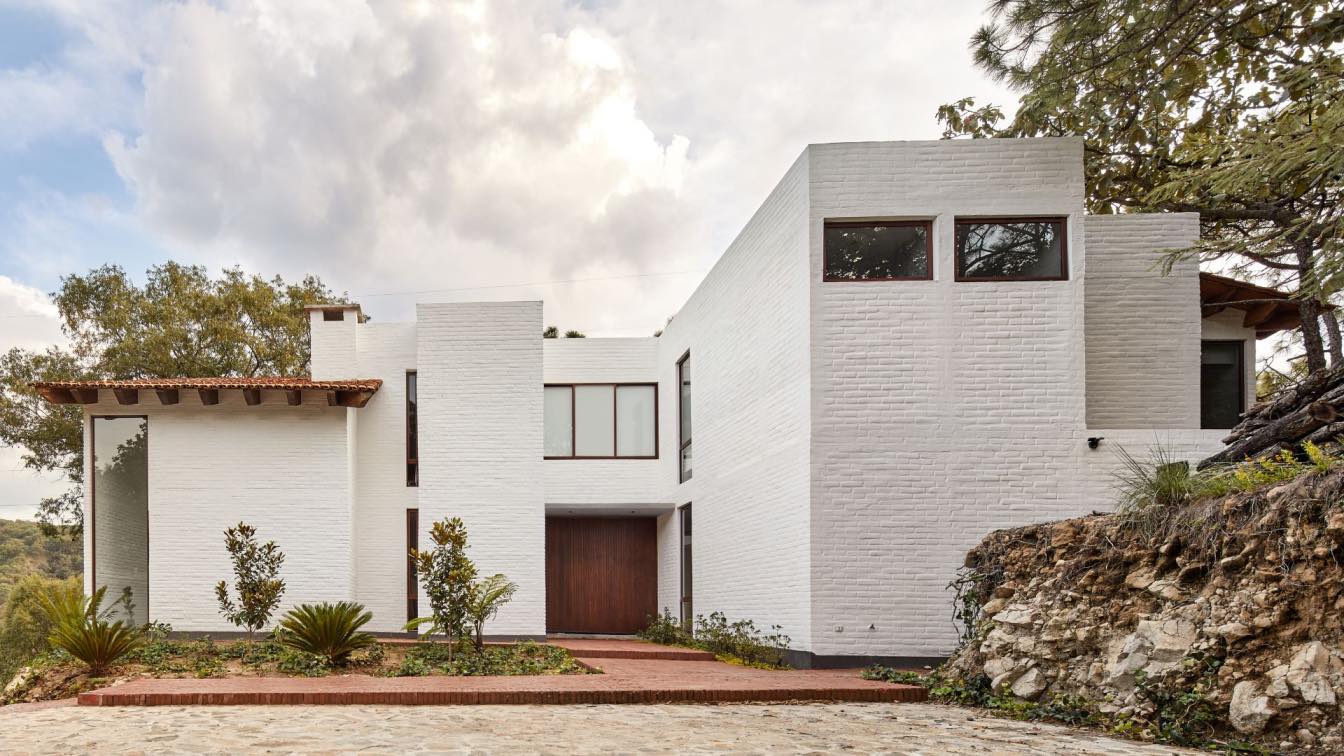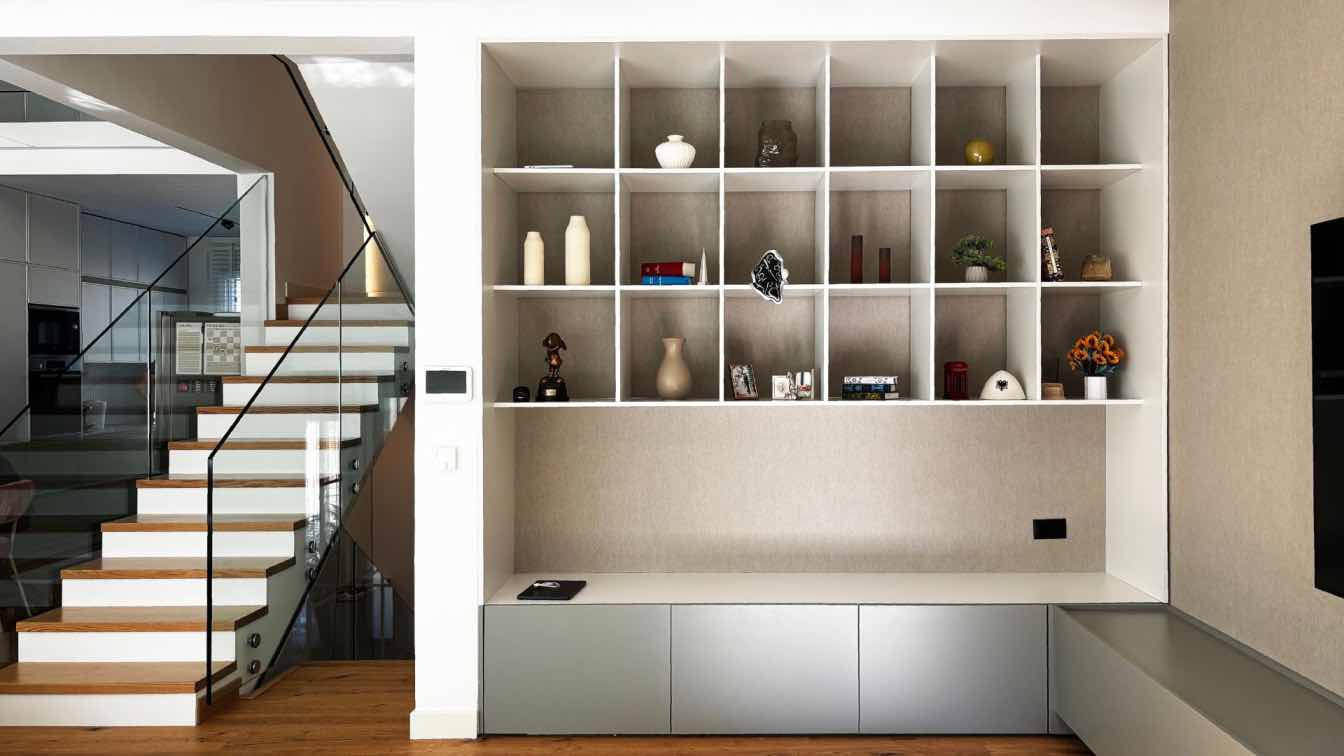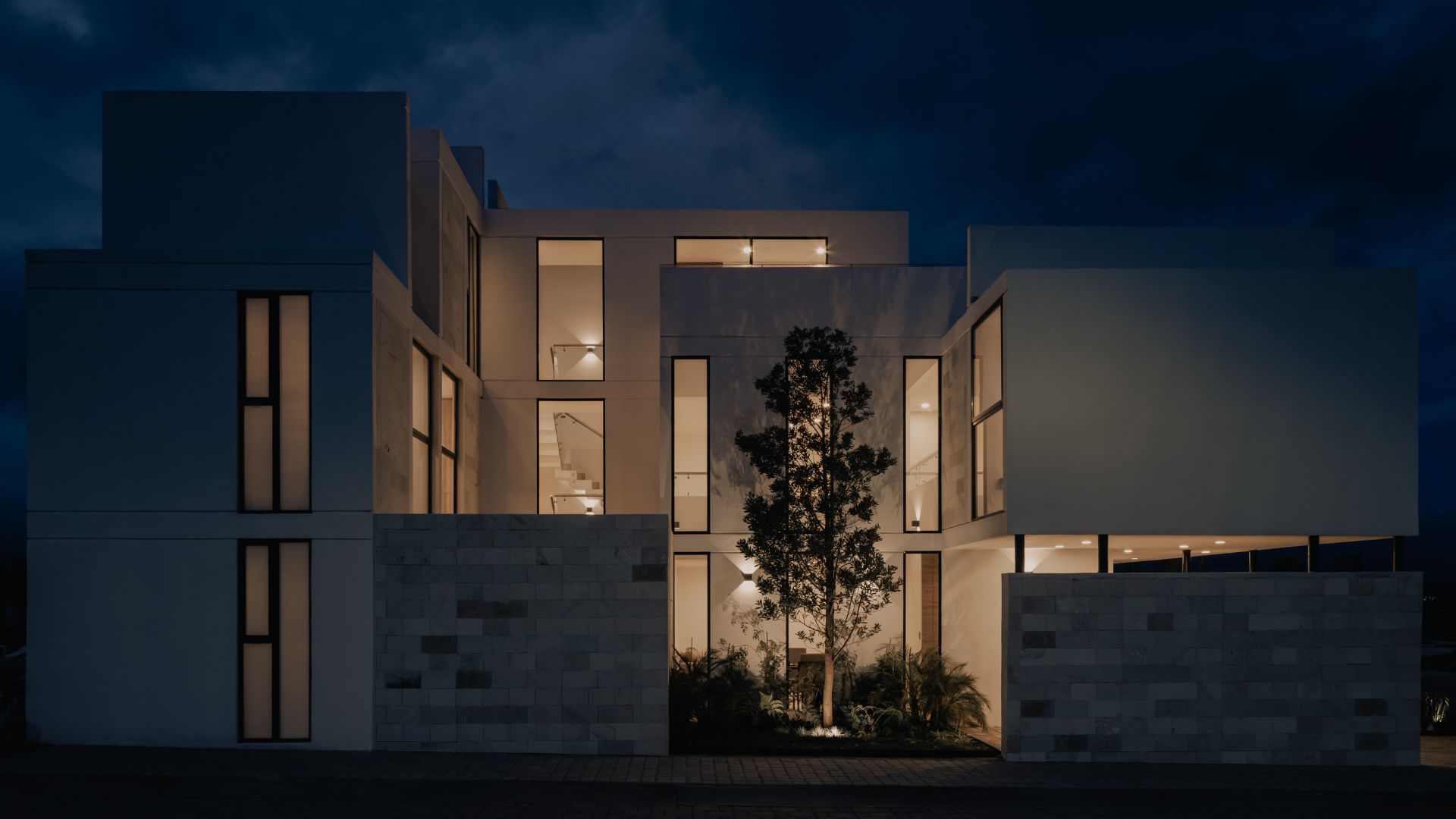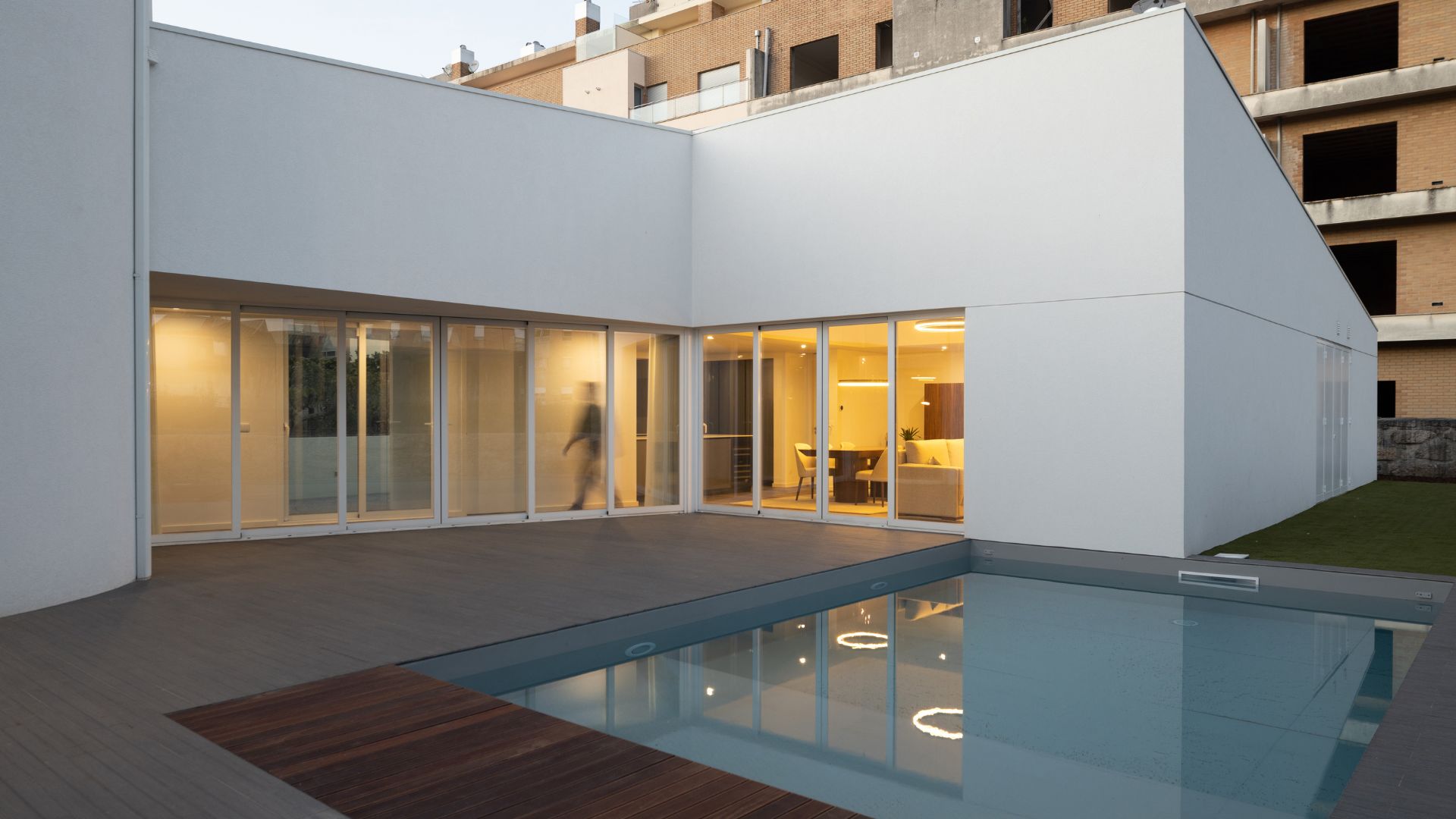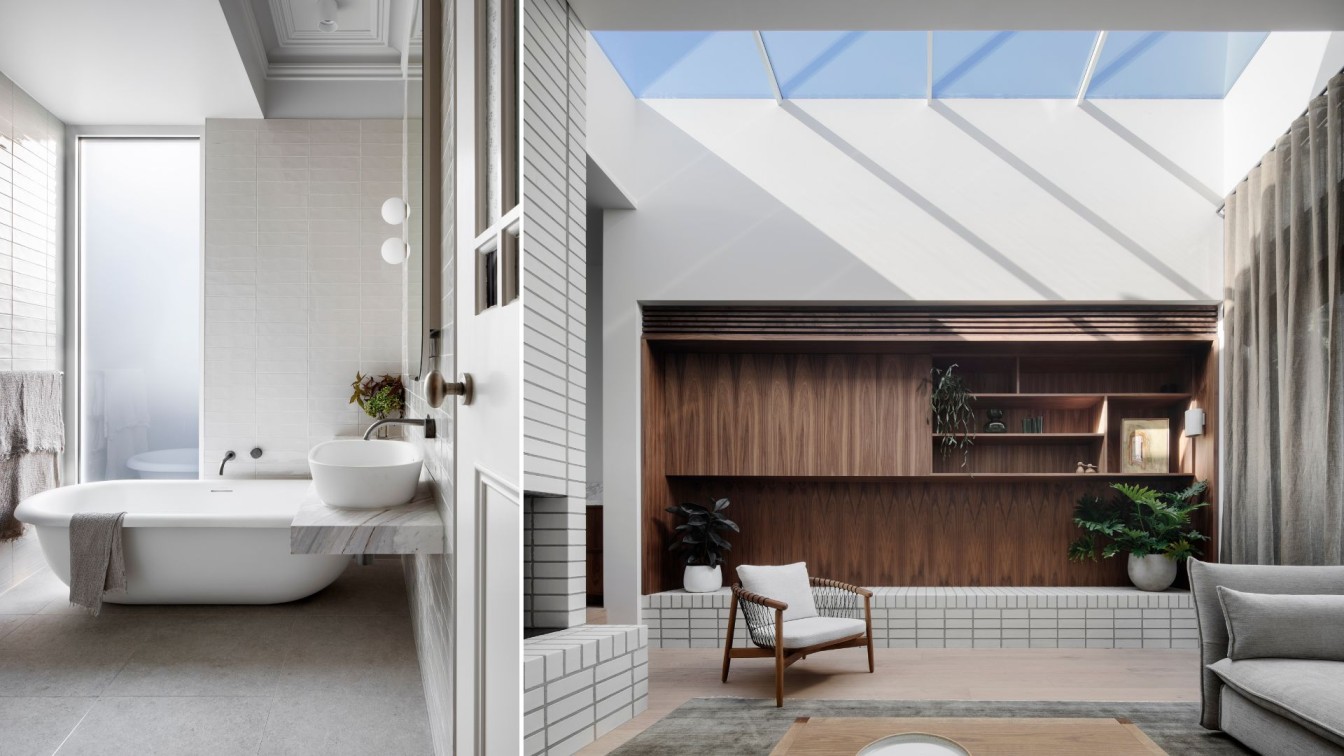HAARQ Estudio: A geometry seeking to adapt to its surroundings, a main facade with few windows, so that when entering the house a side to side the house could appreciate a large window from side to side that allows a clear view towards the the spring forest.
This house has a rustic Mexican architecture, with a constructive system of red brick and dyed red brick construction system and giving it the prominence both in walls and in its entrance esplanade and path around the house to the and the path around the house to the terrace. It has sloping ceilings with wooden beams and wooden siding and red clay tiles on the outside. A double-height living room with a floor-to-ceiling window that allows natural lighting and ventilation. The elongated geometry of the house and quite high ceilings make it appear to be a large house, with 352.04 square meters of construction.
The geometry and materiality favor the best use of the land, in this way, from the moment you enter the house. The geometry and materiality favors the best use of the land, so from the moment you enter the house you are greeted by a large window that opens the view to the forest, all the social areas all the social areas open to the garden of the house, the kitchen and dining room are linked to a terrace to the outside, leaving the private areas on the second floor, at all times seeking to integrate the exterior with the interior through the the exterior with the interior by means of large and long windows.








